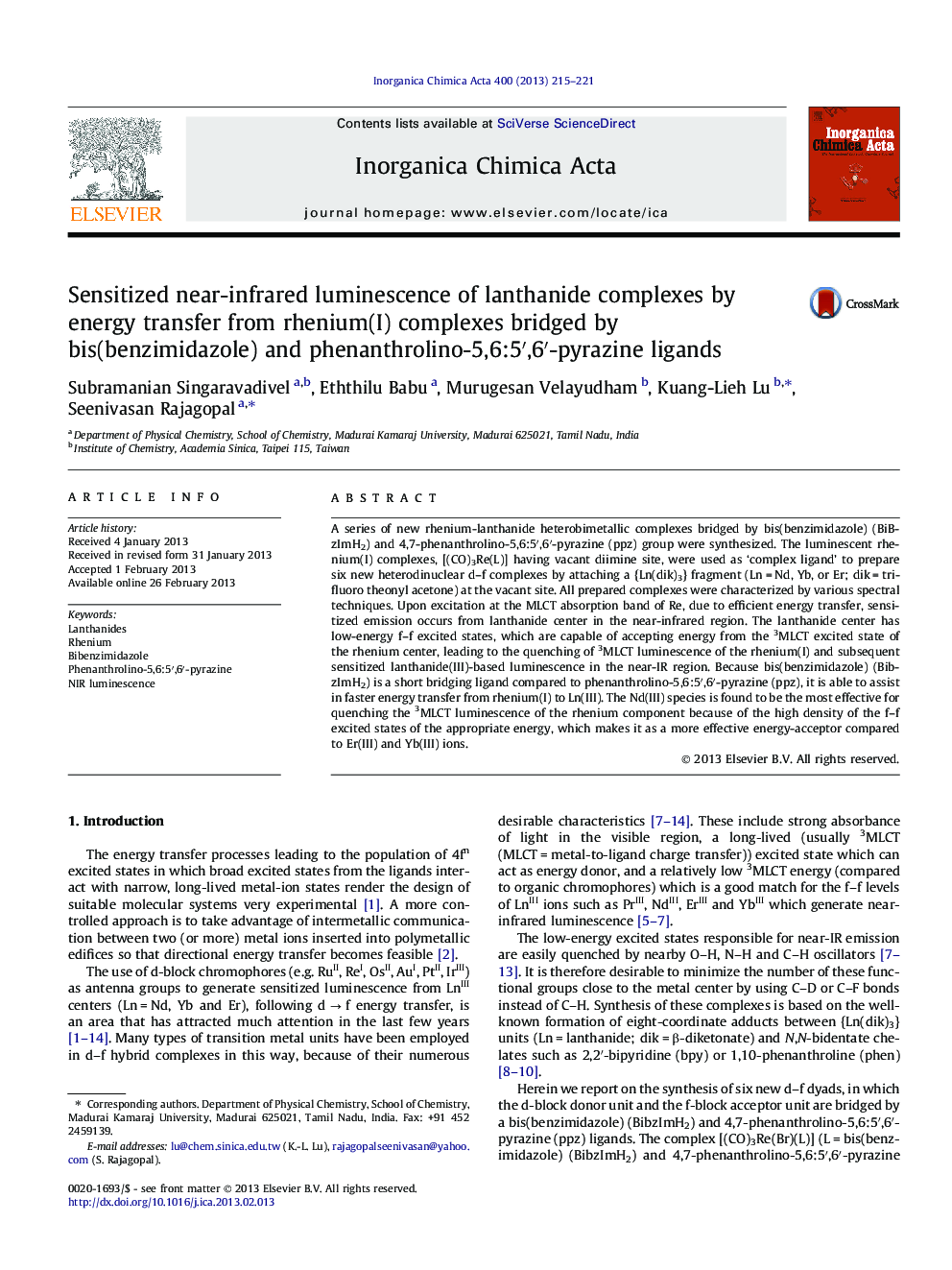| کد مقاله | کد نشریه | سال انتشار | مقاله انگلیسی | نسخه تمام متن |
|---|---|---|---|---|
| 1307120 | 1499187 | 2013 | 7 صفحه PDF | دانلود رایگان |

A series of new rhenium-lanthanide heterobimetallic complexes bridged by bis(benzimidazole) (BiBzImH2) and 4,7-phenanthrolino-5,6:5′,6′-pyrazine (ppz) group were synthesized. The luminescent rhenium(I) complexes, [(CO)3Re(L)] having vacant diimine site, were used as ‘complex ligand’ to prepare six new heterodinuclear d–f complexes by attaching a {Ln(dik)3} fragment (Ln = Nd, Yb, or Er; dik = trifluoro theonyl acetone) at the vacant site. All prepared complexes were characterized by various spectral techniques. Upon excitation at the MLCT absorption band of Re, due to efficient energy transfer, sensitized emission occurs from lanthanide center in the near-infrared region. The lanthanide center has low-energy f–f excited states, which are capable of accepting energy from the 3MLCT excited state of the rhenium center, leading to the quenching of 3MLCT luminescence of the rhenium(I) and subsequent sensitized lanthanide(III)-based luminescence in the near-IR region. Because bis(benzimidazole) (BibzImH2) is a short bridging ligand compared to phenanthrolino-5,6:5′,6′-pyrazine (ppz), it is able to assist in faster energy transfer from rhenium(I) to Ln(III). The Nd(III) species is found to be the most effective for quenching the 3MLCT luminescence of the rhenium component because of the high density of the f–f excited states of the appropriate energy, which makes it as a more effective energy-acceptor compared to Er(III) and Yb(III) ions.
Six new d–f dyads have been prepared, in which Rhenium polypyridine-type chromophores are connected to Ln(III) center bis(benzimidazole)(BiBzImH2) and phenanthrolino-5,6:5′,6′-pyrazine(ppz) bridging ligands. The luminescent rhenium complexes acts as “metallo ligands”, allowing the formation of heterodinuclear complexes by the addition of a Ln(tta)3 unit at the second diimine site.Figure optionsDownload as PowerPoint slideHighlights
► Six new NIR emitting bimetallic Re-Ln complexes were synthesized.
► The luminescent rhenium centre acts as an antenna which transfers energy to Ln(III) complexes.
► The rates of energy transfer and energy transfer efficiencies were compared.
Journal: Inorganica Chimica Acta - Volume 400, 1 May 2013, Pages 215–221